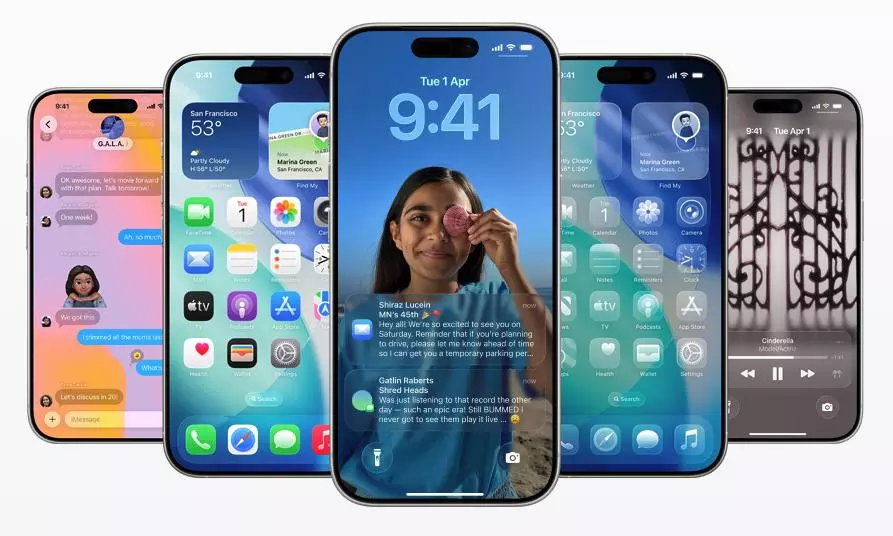By Rachel Monroe
Copyright newyorker

Some critics have dubbed it “murder insurance,” but it’s colloquially known as self-defense insurance—and around two million gun-owning Americans have signed up. A report on the companies that provide subscribers low- or no-cost legal representation after incidents of violence. Plus:
Uniqlo’s radical ubiquity
How Trump is chipping away at disability rights
The challenge of living one day at a time
Gregory Carr and Lyman Davis were friends, more or less. They would sit around drinking and joking, and they knew each other’s families. Carr, a former rodeo clown, once took Davis to watch horses compete in wagon races—“pretty neat,” Davis told me, beaming. But at some point, the men’s relationship deteriorated. Davis, who is seventy-eight, began to think of Carr, about two decades younger than him, as a bully and a braggart. The kind of person who, when a deer was shot, wouldn’t do the hard work to track it down and finish it off. By November, 2019, Carr was living in a trailer with his wife and stepdaughter on Davis’s ranch, outside Seguin, thirty-five miles from San Antonio. The arrangement was meant to be for just a few months, but Davis quickly grew tired of it. “I don’t want anybody else here,” he said. “I bought this, I paid for it, I built every structure that’s out here.” The day before Thanksgiving, the two men went to Davis’s daughter’s house to celebrate. Davis’s grandchildren were there, and it was a lighthearted evening until, while people were crowding together for a photograph, Carr smacked Davis’s butt. It was the second time he’d done something like that, and Davis couldn’t tell what he meant by it: Was it a joke, an insult, a come-on? In any case, “I got hot,” Davis told me. “I reacted pretty bad.” He shouted at Carr, then stalked out of the house. His daughter ran after him, crying. Davis couldn’t get himself to calm down. It seemed to him that Carr was intentionally provoking him into looking like a volatile old man. “He did this to make me do what I did so my daughter and her husband would see,” he said. “And in front of the babies.”
The next evening, Carr knocked on Davis’s door. The two men exchanged words, then began to scuffle; according to Davis, Carr grabbed him by the neck and threw the first punch. Davis had been a college-football player and, later, a high-school coach. Some years earlier, he’d sent a man to the emergency room after a fistfight. But recent surgeries and injuries had left him feeling weak and winded. “For the first time in my life, I felt like I couldn’t handle myself,” he said. “At sixty-seven, I still could, but not at seventy-two.”
Davis carries a Smith & Wesson pistol, and at some point he pulled it out. The fight stopped, more or less; the gun had changed the dynamic. Davis put the firearm away and turned to walk back inside. Then things began to happen very quickly. “He kicked me in the ass. I kicked him in the nuts and pulled the gun again. This time he ran. And it’s dark, it’s pitch-dark. I heard a noise. I can’t see nothing,” Davis told me. “The next thing I know, the gun went off.” The moment had a cinematic air. Davis looked at the barrel of the pistol and saw smoke curling upward, as if in slow motion. Carr appeared out of the darkness saying, “You shot me.” Davis dropped to his knees to blow in Carr’s mouth and press on a wound in his torso. Carr’s wife was outside by now, screaming. The shot was fatal. (Carr’s wife couldn’t be reached for comment.)
When law enforcement showed up, Davis asked to have his hands cuffed in front of him, so as not to aggravate his bum shoulder. In the back of the cruiser, which would take him to the Guadalupe County jail, he reached his shackled hands up to his shirt pocket to slip out his phone. He dialled a number he’d never imagined using. After a few rings, a lawyer working with U.S. Law Shield answered. “I shot somebody,” Davis said. “I need help.”
Keep reading »
“Uniqlo is the universal donor of fashion, intended to go with any life style or aesthetic,” Lauren Collins writes, of the Japanese clothing company, which sees itself as a kind of distribution system for utopian values. But can you really change the world by selling ninety-nine-dollar cashmere sweaters? Read the story »
Donald Trump’s Assault on Disability Rights
Can You Really Live One Day at a Time?
Shouts & Murmurs: White House Job Openings
Donald Trump filed a fifteen-billion-dollar defamation lawsuit against the New York Times, naming specific articles and reporters. In a statement, the Times said the lawsuit has “no merit.”
How bad is it?
“The lawsuit’s attack on institutions of news media and publishing joins Trump’s persecution of law firms and universities. The goal is apparently not to win in court but to scare professionals away from doing their work in ways that are unfavorable to him and his agenda. Even the cost of defending against a non-meritorious suit is likely to deter many reporters and publications.”
— Jeannie Suk Gersen, a Harvard Law professor and a New Yorker contributor
Read: Mark Hamill, a.k.a. Luke Skywalker in “Star Wars,” is a big Stephen King fan. Hamill recently shared some of his favorite books with us.
Watch: Mike Figgis’s documentary about the making of Francis Ford Coppola’s “Megalopolis” reveals the risky freedom of the director’s approach.
Listen: Bad Bunny has six “deliriously good solo albums,” Kelefa Sanneh writes. “He is probably the most important musician in the world right now.”
Today’s Crossword Puzzle: Type of basket that might be attempted with 0.1 seconds on the shot clock—five letters.
Laugh Lines: Test your knowledge of classic New Yorker cartoons.
Name Drop: Guess the identity of a notable person in six clues.
P.S. Robert Redford, the director, activist, and star of such films as “Butch Cassidy and the Sundance Kid” and “All the President’s Men,” died early this morning at his home in Utah. He was eighty-nine. In a 1998 Profile of Redford, Richard Rayner wrote, “There’s no actor most people are happier to watch.”
Erin Neil contributed to today’s edition.



